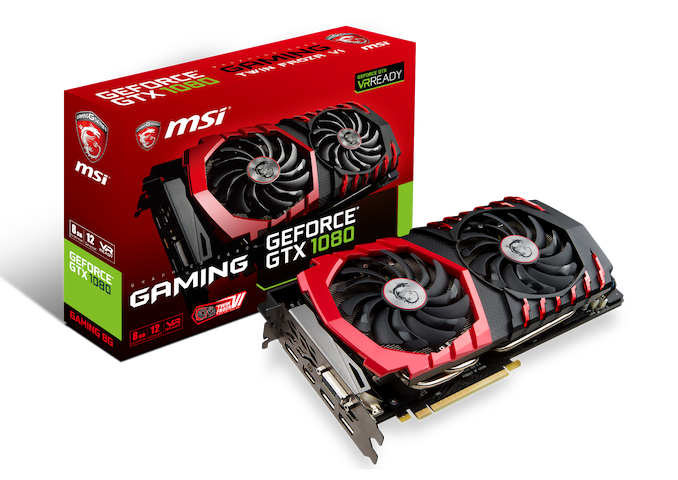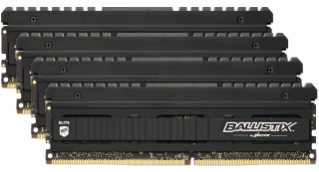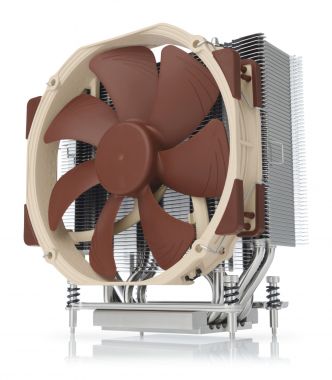ASUS TUF Gaming Z590-Plus WIFI Motherboard Review: Is $260 Mid-Range or High-End?
by Gavin Bonshor on August 10, 2021 10:00 AM ESTBoard Features
The ASUS TUF Gaming Z590-Plus WIFI is a mid-range ATX motherboard that caters to gamers and sits as one of the ASUS core gaming series. It includes plenty of features and specifications, including plentiful storage options consisting of one PCIe 4.0 x4 M.2 slot, two PCIe 3.0 x4/SATA M.2 slots, and six SATA ports with support for RAID 0, 1, 5, and 10 arrays. ASUS includes plenty of expansion support which consists of one full-length PCIe 4.0 x16 slot, one full-length PCIe 3.0 x4 slot, and two PCIe 3.0 x1 slots. In regards to memory support, users can install DDR4-5133 with a combined capacity of up to 128 GB across four memory slots.
Cooling options on the Z590-Plus WIFI include six 4-pin headers, with two designated to CPU fans, one for an AIO water pump, and three for chassis fans.
| ASUS TUF Gaming Z590-Plus WIFI ATX Motherboard | |||
| Warranty Period | 3 Years | ||
| Product Page | Link | ||
| Price | $259 | ||
| Size | ATX | ||
| CPU Interface | LGA1200 | ||
| Chipset | Intel Z590 | ||
| Memory Slots (DDR4) | Four DDR4 Supporting 128 GB Dual-Channel Up to DDR4-5133 |
||
| Video Outputs | 1 x HDMI 2.0 1 x DisplayPort 1.4 |
||
| Network Connectivity | Intel I225-V 2.5 GbE Intel AX200 Wi-Fi 6 |
||
| Onboard Audio | Realtek ALC S1200A | ||
| PCIe Slots for Graphics (from CPU) | 1 x PCIe 4.0 (x16) | ||
| PCIe Slots for Other (from PCH) | 1 x PCIe 3.0 x4 2 x PCIe 3.0 x1 |
||
| Onboard SATA | Six, RAID 0/1/5/10 (Z590) | ||
| Onboard M.2 | 1 x PCIe 4.0 x4 2 x PCIe 3.0 x4/SATA |
||
| Thunderbolt 4 (40 Gbps) | N/A | ||
| USB 3.2 (20 Gbps) | 1 x USB Type-C (Rear panel) | ||
| USB 3.2 (10 Gbps) | 2 x USB Type-A (Rear panel) | ||
| USB 3.1 (5 Gbps) | 2 x USB Type-A (Rear panel) 2 x USB Type-A (One header) 1 x USB Type-C (One header) |
||
| USB 2.0 | 2 x USB Type-A (Rear panel) 4 x USB Type-A (Two headers) |
||
| Power Connectors | 1 x 24-pin Motherboard 1 x 8-pin CPU 1 x 4-pin CPU |
||
| Fan Headers | 2 x 4-pin CPU 1 x 4-pin AIO Pump 3 x 4-pin Chassis |
||
| IO Panel | 2 x Antenna Ports (Intel) 1 x PS/2 Combo port 1 x USB 3.2 G2x2 Type-C 2 x USB 3.2 G2 Type-A 2 x USB 3.2 G1 Type-A 2 x USB 2.0 Type-A 1 x RJ45 (Intel) 1 x HDMI 2.0 output 1 x DisplayPort 1.4 output 5 x 3.5 mm audio jacks (Realtek) 1 x S/PDIF Optical output (Realtek) |
||
Connectivity has been a big focus over the years for ASUS, and the TUF Gaming Z590-Plus WIFI benefits from one USB 3.2 G2x2 Type-C, two USB 3.2 G2 Type-A, two USB 3.2 G1 Type-A, and two USB 2.0 ports on the rear panel. Users can add to this via the front panel headers, which include one USB 3.2 G1 Type-C, one USB 3.2 G1 Type-A header (two ports), and two USB 2.0 headers (four ports).
Looking at networking options, ASUS is using an Intel AX200 Wi-Fi 6 CVNi, with a single Intel I225-V 2.5 Gigabit Ethernet controller. Users planning on using Intel's integrated graphics can do so via the HDMI 2.0 and DisplayPort 1.4 video output pairing on the rear panel. Onboard audio is provided by a Realtek ALC S1200A HD audio codec, which powers five 3.5 mm audio jacks and one S/PDIF optical output on the rear panel.
Test Bed
With some of the nuances with Intel's Rocket Lake processors, our policy is to see if the system gives an automatic option to increase the power limits of the processor. If it does, we select the liquid cooling option. If it does not, we do not change the defaults. Adaptive Boost Technology is disabled by default.
| Test Setup | |||
| Processor | Intel Core i9-11900K, 125 W, $374 8 Cores, 16 Threads 3.5 GHz (5.3 GHz Turbo) |
||
| Motherboard | ASUS TUF Gaming Z590-Plus WIFI (BIOS 1017) | ||
| Cooling | Corsair iCue H150i Elite Capellix 360 mm AIO | ||
| Power Supply | Corsair HX850 80Plus Platinum 850 W | ||
| Memory | G.Skill TridentZ DDR4-3200 CL 14-14-14-34 2T (2 x 8 GB) | ||
| Video Card | MSI GTX 1080 (1178/1279 Boost) | ||
| Hard Drive | Crucial MX300 1TB | ||
| Case | Corsair Crystal 680X | ||
| Operating System | Windows 10 Pro 64-bit: Build 20H2 | ||
We must also thank the following:


















23 Comments
View All Comments
Arcadianu9 - Tuesday, August 10, 2021 - link
I would have liked to see the performance with one of the faster M.2 storage devices, and different configurations across the PCIe Gen4 and Gen3 connectors. The Crucial MX300 appears to be a SATA drive, which leaves a ton of performance on the table.Leeea - Tuesday, August 10, 2021 - link
What is weird about this is the ASUS TUF Gaming X570-PRO (WiFi 6) is both cheaper at $220 and is superior.That $40 difference also goes a long way to cover the difference in cost between
Wrs - Tuesday, August 10, 2021 - link
That’s AMD. The pins are on the CPU so the CPU is more expensive to match. Additionally Rocket Lake draws more instantaneous current so the boards need more VRMs. The AMD board’s second slot is PCIe-4, but it’s missing the third M2 slot as well as front USB-CLeeea - Tuesday, August 10, 2021 - link
The x570-Pro has the front and back USB-C ports. ( I have one sitting two feet from me )It also has 2x more SATA lines, BIOS flashback, PCIe 4 slots, multiple graphics card slots (the reviewed board indicates it only has one), and both m2 slots are PCIe 4.
The additional m2 slot on the z590 is an advantage, but cheap adaptors exist for converting PCIe 4.0 slots to m.2.
Yea, the different socket does cost more then the AMD equivalent, but ironically the CPU the board was reviewed with, the i9-11900K, costs a $150 more then its AMD equivalent 5800x.
Wrs - Tuesday, August 10, 2021 - link
Whoops, sorry about the USB-C front.For price comparisons I'd never match AMD's mid-range to Intel's top-end. The mobo+CPU comparison is far closer between 5800X/Z570 and 11700KF/Z590. The nice thing is street prices have been adjusting to relative performance & availability. Intel is obviously sweating on 14nm as they don't have any 12- or 16-core K competitor, plus they're cutting Rocket Lake below MSRP as it merely throws punches vs. a 5800x and is a bit behind in gaming and very much in power efficiency.
The PCI-e 4 lanes on x570 aren't always an advantage here, btw. See, Ryzen 3000 & 5000 only have 24 PCIe-4 lanes coming out of the SOC. In the TUF series, 16 are used for the first graphics slot and 4 for the first M2 slot, leaving 4 for the chipset to spread out between the second x16 graphics slot, second M2, and many of those USB links and Wifi. On Rocket Lake, 20 PCIe-4 lanes are used for the same graphics and M2 slots, but then 8 PCIe-3 lanes go to the chipset. The second x16 slot on both TUF boards is electrically just x4, but on the Intel version the halved bandwidth is accompanied by much less resource contention. This is primarily evident if you're using both a second M2 and multiple PCI-e cards on both boards - the simultaneous bandwidth off the chipsets is identical.
Leeea - Wednesday, August 11, 2021 - link
If I could upvote your post I would. :)supdawgwtfd - Wednesday, August 11, 2021 - link
8x gen3 lanes have the same bandwidth as 4x gen 4 lanes.Based on your comments the choosers would have the same bandwidth to the CPU?
What point we're you tryjg to make?
Threska - Tuesday, August 10, 2021 - link
"Although the aforementioned competitor's models include better onboard audio solutions, the ASUS and its lower price puts it in a solid position for users looking for a sub $300 model to build a Rocket Lake based system."But how many use the onboard audio anyway? Even the GPU has an onboard solution.
neothe0ne - Tuesday, August 10, 2021 - link
The vast majority of desktop computers use onboard sound from the motherboard. I'd guess that the market for cheap (e.g., sub-$150) DAC's/cards is just for people who buy a motherboard with a subpar Realtek audio implementation that lets them hear all their computer noise crystal clear.Operandi - Tuesday, August 10, 2021 - link
This isn't the early 00s DACs are easy these days as is evident by how many people use onboard audio (even with decent headphones or speakers) which is nearly everyone.